STAR
Step Towards
Academic Research
Ajay Koli

Ajay Koli
Head of School of Data Science
Nalanda Academy - Wardha, India
koliajaykumar@gmail.com
@ajay_kolii
Jai Bhim! 😊
STAR: Step Towards Academic Research
STAR: Step Towards Academic Research
Schedule:
📅 24 to 27 May 2022
⏰ from 08:00 to 11:00 AM & 14:00 to 18:00 PM IST
Total 28 HRS of sessions
STAR: Step Towards Academic Research
Schedule:
📅 24 to 27 May 2022
⏰ from 08:00 to 11:00 AM & 14:00 to 18:00 PM IST
Total 28 HRS of sessions
Free eBooks will be given and slides will be shared.
Purpose
This Research Methodology Workshop is organised by the Nalanda Academy to:
- provide an overview of research,
Purpose
This Research Methodology Workshop is organised by the Nalanda Academy to:
provide an overview of research,
familiarity with quan, qual and mixed methods,
Purpose
This Research Methodology Workshop is organised by the Nalanda Academy to:
provide an overview of research,
familiarity with quan, qual and mixed methods,
research areas where data science can help.
"in our everyday reasoning about the social world, prior experiences and orientations may have a major influence on what we perceive and how we interpret these perceptions. ...
"in our everyday reasoning about the social world, prior experiences and orientations may have a major influence on what we perceive and how we interpret these perceptions. ... We need to move beyond first impressions and get reactions to more systematic methods of investigation. That’s what social research does."2
But is it easy to move beyond the first impressions knowledge?
But is it easy to move beyond the first impressions knowledge?

Giordano Bruno
But is it easy to move beyond the first impressions knowledge?

Giordano Bruno

Savitribai Phule
Science
- A set of logical, systematic, documented methods for investigating nature and natural processes; the knowledge produced by these investigations.2

Social Science
- The use of scientific methods to investigate individuals, societies, and social processes; the knowledge produced by these investigations.2

Image source: Early censuses and surveys provided demographic data.
Research Hell 🔥
How to make it
less painful?
Research Framework
Session 1
Why research?
- "Research results in the creation of knowledge to solve a problem, answer a question, and better describe or understand something."
Clough, P., & Nutbrown, C. (2012). A Student′ s Guide to Methodology. Sage.
Why research?
- "Research results in the creation of knowledge to solve a problem, answer a question, and better describe or understand something."
Clough, P., & Nutbrown, C. (2012). A Student′ s Guide to Methodology. Sage.
Find your reason:
- education
- better opportunities
- curiosity
- targets
- policy critic
- climate change
- fame
- human rights for all genders & castes
- poverty alleviation
- consumption
- production
- medicine
What is research?
- "is about asking questions, exploring problems and reflecting on what emerges in order to make meaning from the data and tell the research story"
Clough, P., & Nutbrown, C. (2012). A Student′ s Guide to Methodology. Sage.
What is research?
- "questions about the world and a desire to accurately answer them" 2
What is research?
"questions about the world and a desire to accurately answer them" 2
"steps from broad assumptions to detailed methods of data collection, analysis, and interpretation" 3
What is research?
"questions about the world and a desire to accurately answer them" 2
"steps from broad assumptions to detailed methods of data collection, analysis, and interpretation" 3
"Just close your eyes for a minute and utter the word research to yourself."1
Let's cook some research 👨🍳
Let's cook some research 👨🍳
- What to cook?
Introduction + Literature review
Let's cook some research 👨🍳
- What to cook?
Introduction + Literature review
- How to cook?
Methodology
Let's cook some research 👨🍳
- What to cook?
Introduction + Literature review
- How to cook?
Methodology
- What is the result of your cooking?
Data analysis
Let's cook some research 👨🍳
- What to cook?
Introduction + Literature review
- How to cook?
Methodology
- What is the result of your cooking?
Data analysis
- How similar or different is your cooked food?
Discussion
Let's cook some research 👨🍳
- What to cook?
Introduction + Literature review
- How to cook?
Methodology
- What is the result of your cooking?
Data analysis
- How similar or different is your cooked food?
Discussion
- So what, you cooked this dish (shit)?
Conclusion
Social science methods help to avoid:
OvergeneralizationSelective or Inaccurate ObservationIllogical reasoningResistance to change

Social science methods help to avoid:
Overgeneralization: Occurs when we unjustifiably conclude that what is true for some cases is true for all cases

Social science methods help to avoid:
Selective or Inaccurate Observation:Choosing to look only at things that are in line with our preferences or beliefs.

Social science methods help to avoid:
Illogical reasoning:The premature jumping to conclusions or arguing on the basis of invalid assumptions.

Social science methods help to avoid:
Overgeneralization
Selective or Inaccurate Observation
Illogical reasoning
Resistance to change
Resistance to change:The reluctance to change our ideas in light of new information.
Four goals of social research are:
Description:Research in which social phenomena are defined and described.
Four goals of social research are:
Description:Research in which social phenomena are defined and described.Exploration:Seeks to find out how people get along in the setting under question, what meanings they give to their actions, and what issues concern them.
Four goals of social research are:
Description:Research in which social phenomena are defined and described.Exploration:Seeks to find out how people get along in the setting under question, what meanings they give to their actions, and what issues concern them.Explanation:Seeks to identify causes and effects of social phenomena and to predict how one phenomenon will change or vary in response to variation in another phenomenon.
Four goals of social research are:
Description:Research in which social phenomena are defined and described.Exploration:Seeks to find out how people get along in the setting under question, what meanings they give to their actions, and what issues concern them.Explanation:Seeks to identify causes and effects of social phenomena and to predict how one phenomenon will change or vary in response to variation in another phenomenon.Evaluation:Research that describes or identifies the impact of social policies and programs.
How well have we done our research?
Validity:The state that exists when statements or conclusions about empirical reality are correct.
How well have we done our research?
Validity:The state that exists when statements or conclusions about empirical reality are correct.Three kinds of validity:
Measurement validity: Exists when an indicator measures what we think it measures.
How well have we done our research?
Validity:The state that exists when statements or conclusions about empirical reality are correct.Three kinds of validity:
Measurement validity: Exists when an indicator measures what we think it measures.Causal validity(Internal validity): Exists when a conclusion that A leads to, or results in, B is correct.
How well have we done our research?
Validity:The state that exists when statements or conclusions about empirical reality are correct.Three kinds of validity:
Measurement validity: Exists when an indicator measures what we think it measures.Causal validity(Internal validity): Exists when a conclusion that A leads to, or results in, B is correct.Generalizability: Exists when a conclusion holds true for the population, group, settings, or event that we say it does, given the conditions that we specify; it is the extent to which a study can inform us about persons, places, or events that were not directly studies.
Generalizability
Sample generalizability: Exists when a conclusion based on a sample, or subset, of a larger population holds true for that population.
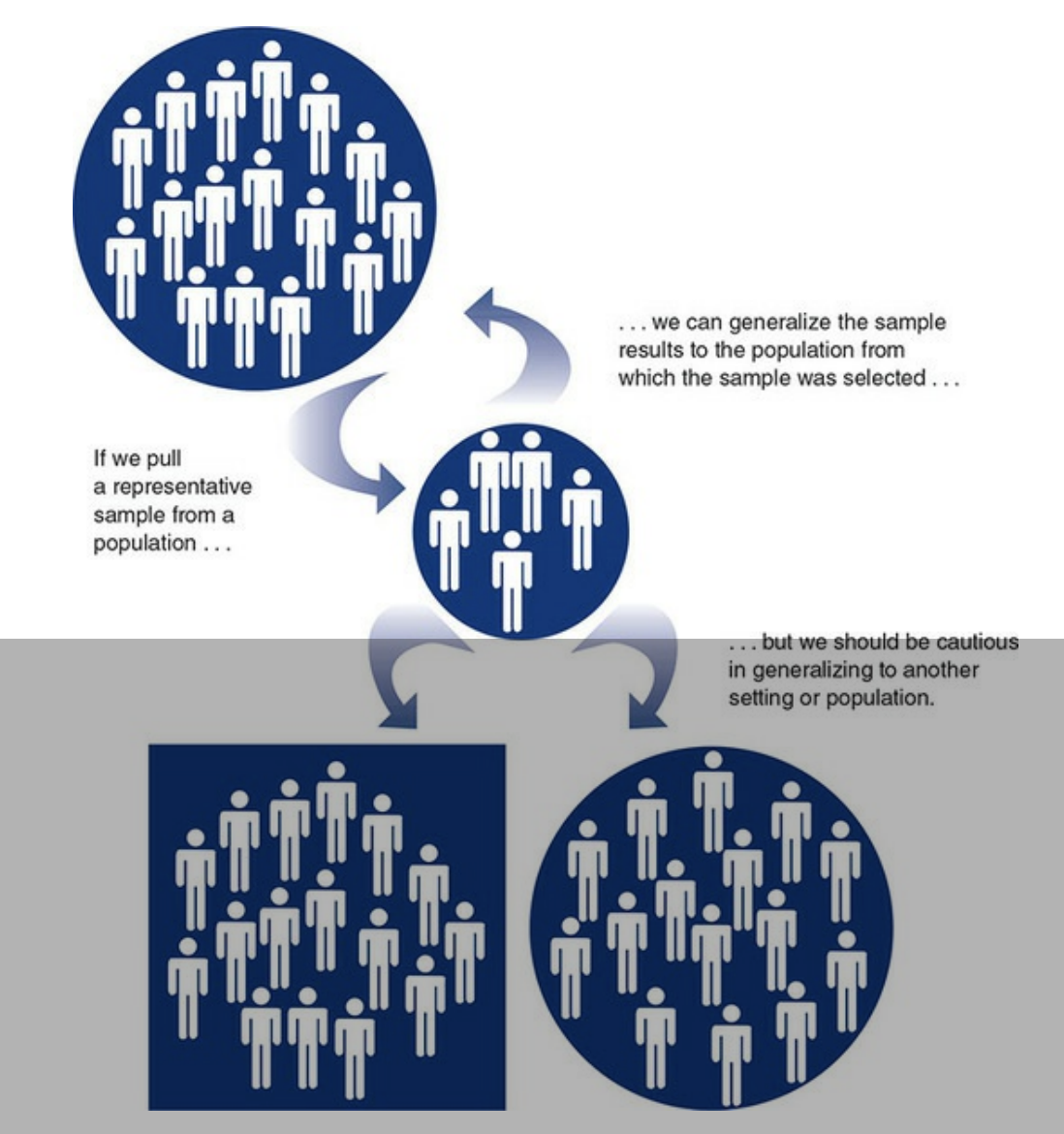
Generalizability
Cross-population generalizability (external validity):
Exists when findings about one group, population, or setting hold true for other groups, populations, or settings.
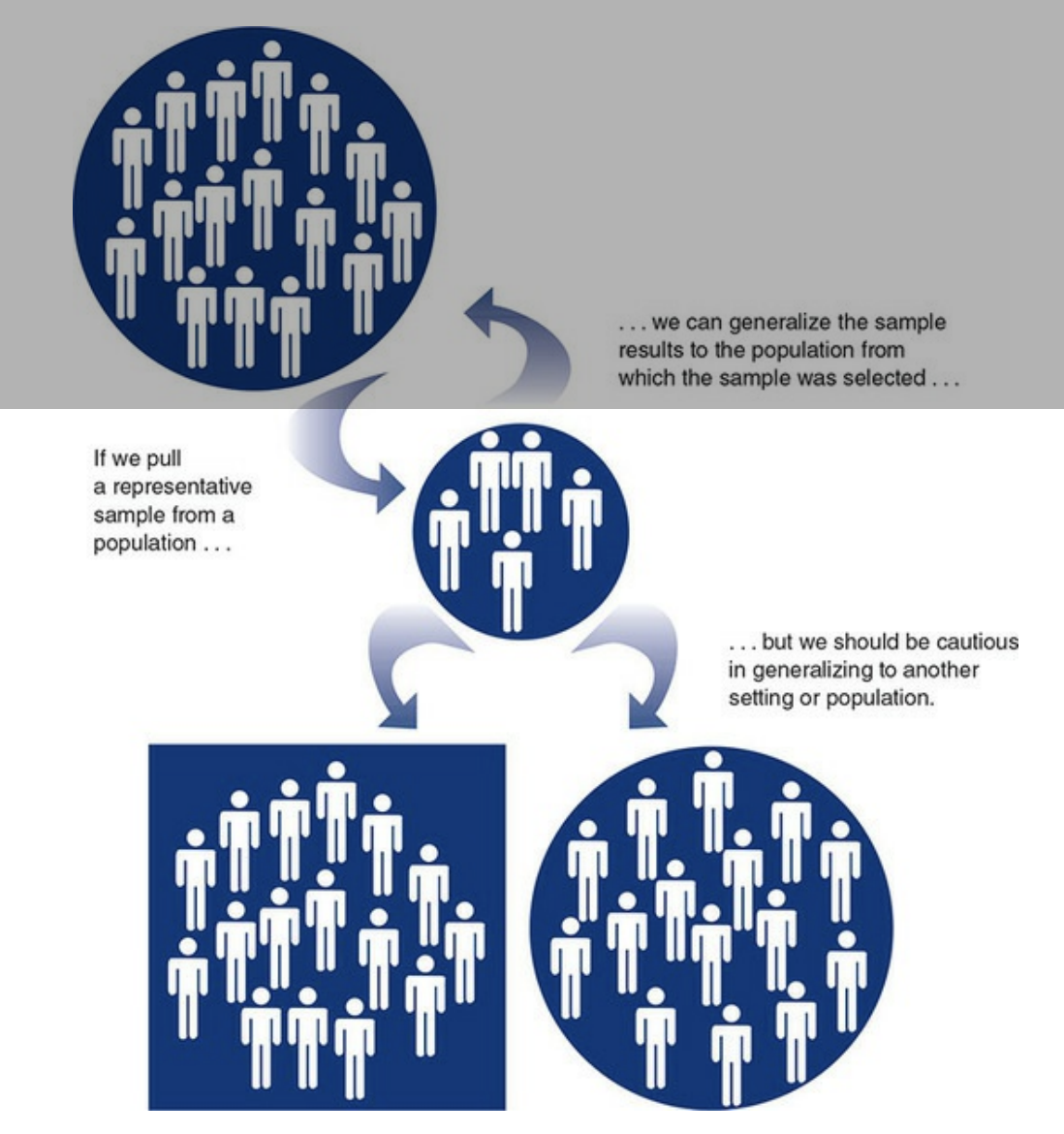
Research Approaches
Session 2
Outcomes:
- Determining your research approach
Outcomes:
Determining your research approach
Identifying a worldview with which you are most comfortable
Outcomes:
Determining your research approach
Identifying a worldview with which you are most comfortable
Defining the three types of research approaches
Outcomes:
Determining your research approach
Identifying a worldview with which you are most comfortable
Defining the three types of research approaches
Using quantitative, qualitative, and mixed methods designs and methods
This session slides are prepared from Chapter 1 of Creswell, J. W., & Creswell, J. D. (2017). Research design: Qualitative, quantitative, and mixed methods approaches. Sage publications.
Research approach
- "Research approaches are plans and the procedures for research that span the steps from broad assumptions to detailed methods of data collection, analysis, and interpretation."
Three research approaches are:
Qualitative
Quantitative, and
Mixed methods.
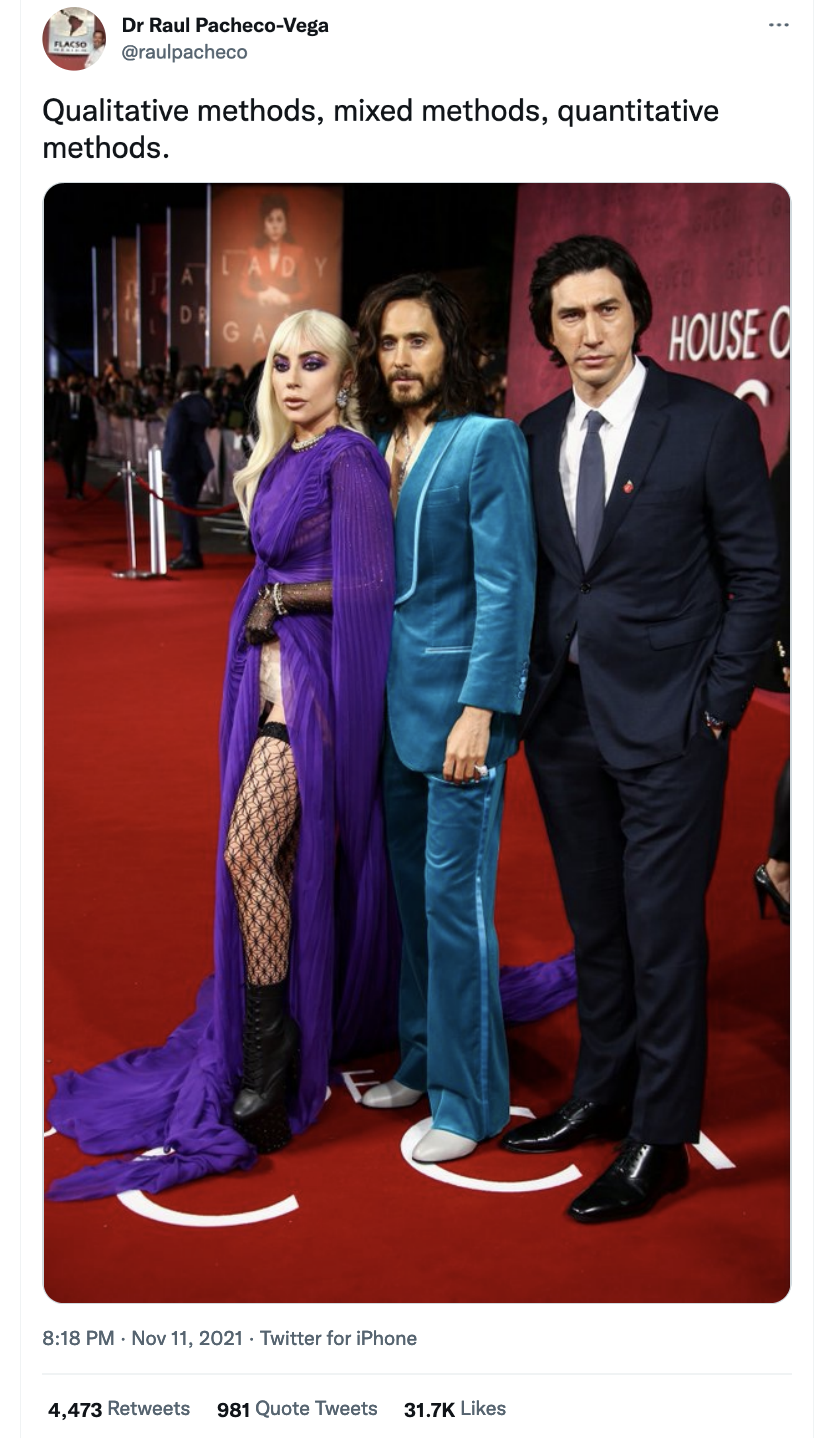
Qualitative approach
- "using words"
Qualitative approach
"using words"
"is an approach for exploring and understanding
the meaning individuals or groups ascribe
to a social or human problem."
Qualitative approach
"using words"
"is an approach for exploring and understanding
the meaning individuals or groups ascribe
to a social or human problem."open-ended questions and responses
Qualitative approach
"using words"
"is an approach for exploring and understanding
the meaning individuals or groups ascribe
to a social or human problem."open-ended questions and responses
flexible report structure
Qualitative approach
"using words"
"is an approach for exploring and understanding
the meaning individuals or groups ascribe
to a social or human problem."open-ended questions and responses
flexible report structure
for example violence
Qualitative approach
"using words"
"is an approach for exploring and understanding
the meaning individuals or groups ascribe
to a social or human problem."open-ended questions and responses
flexible report structure
for example work burnout
Qualitative approach
"using words"
"is an approach for exploring and understanding
the meaning individuals or groups ascribe
to a social or human problem."open-ended questions and responses
flexible report structure
for example luxury purchase
Quantitative approach
- "use numbers"
Quantitative approach
"use numbers"
"is an approach for testing objective theories
by examining relationship among variables"
Quantitative approach
"use numbers"
"is an approach for testing objective theories
by examining relationship among variables"closed-ended questions and responses
Quantitative approach
"use numbers"
"is an approach for testing objective theories
by examining relationship among variables"closed-ended questions and responses
set structure
Quantitative approach
"use numbers"
"is an approach for testing objective theories
by examining relationship among variables"closed-ended questions and responses
set structure
example games & violence
Quantitative approach
"use numbers"
"is an approach for testing objective theories
by examining relationship among variables"closed-ended questions and responses
set structure
example mobile and sleep disorder
Quantitative approach
"use numbers"
"is an approach for testing objective theories
by examining relationship among variables"closed-ended questions and responses
set structure
example shelf management
Mixed methods approach
- "an approach to inquiry involving collecting
both quantitative and qualitative data,
integrating the two forms of data, and
using distinct designs that may involve
philosophical assumptions and
theoretical frameworks."
Mixed methods approach
- "an approach to inquiry involving collecting
both quantitative and qualitative data,
integrating the two forms of data, and
using distinct designs that may involve
philosophical assumptions and
theoretical frameworks."
- Example gender & alcohol
Mixed methods approach
- "an approach to inquiry involving collecting
both quantitative and qualitative data,
integrating the two forms of data, and
using distinct designs that may involve
philosophical assumptions and
theoretical frameworks."
- Example student anxiety
Mixed methods approach
- "an approach to inquiry involving collecting
both quantitative and qualitative data,
integrating the two forms of data, and
using distinct designs that may involve
philosophical assumptions and
theoretical frameworks."
- Example family formation
A Framework for Research
The Interconnection of World-views, Research Designs, & Research Methods

Research approach depends upon:
Philosophical world-view: a general philosophical orientation about the world and the nature of research that a researcher brings to a study

Research approach depends upon:
Research designs: procedures of inquiry as per the philosophical assumptions

Research approach depends upon:
Research methodsof data collection, analysis and interpretation

Philosophical Worldviews
Postpositivism
Determination (cause & effect)
Reductionism (idea -> variables -> hypothesis)
Empirical observation and measurement
Theory verification

Philosophical Worldviews
Constructivist
Understanding
Multiple participant meanings
Social & historical construction
Theory generation

Philosophical Worldviews
Transformative
Political
Power & justice oriented
Collaborative
Change-oriented

Philosophical Worldviews
Pragmatic
Consequence of actions
Problem-centered
Pluralistic
Real-world practice oriented

Research Designs
- "are types of inquiry within qualitative, quantitative, and mixed methods approaches that provide specific direction for procedures in a research designs"
Research Designs
- "are types of inquiry within qualitative, quantitative, and mixed methods approaches that provide specific direction for procedures in a research designs"
Experimental designs
Non-experimental designs, such a surveys
Narrative research
Phenomenology
Grounded theory
Ethnographies
Case study
Convergent
Explanatory sequential
Exploratory sequential
Transformative, embedded , or multiphase
Research Methods
- "involve the forms of data collection, analysis, and interpretation that researchers propose for their studies"
Research Methods
- "involve the forms of data collection, analysis, and interpretation that researchers propose for their studies"
Pre-determined
Instrument based questions
Performance data, attitude data, observational data, & census data
Statistical analysis
Statistical interpretation
Emerging methods
Open-ended questions
Interview data, observation data, document data & audiovisual data
Test & image analysis
Themes, patterns interpretation
Both predetermined & emerging methods
Both open- and closed- ended questions
Multiple forms of data drawing on all possibilities
Statistical & text analysis
Across databases interpretation
Research Approaches as Worldviews, Designs, and Methods
Quantitative approach: Postpositivist worldview, experimental design, and pretest and posttest measures of attitudes
Research Approaches as Worldviews, Designs, and Methods
Quantitative approach: Postpositivist worldview, experimental design, and pretest and posttest measures of attitudesQualitative approach: Constructivist worldview, ethnographic design, and observation of behavior
Research Approaches as Worldviews, Designs, and Methods
Quantitative approach: Postpositivist worldview, experimental design, and pretest and posttest measures of attitudesQualitative approach: Constructivist worldview, ethnographic design, and observation of behaviorMixed methods approach: Pragmatic worldview, collection of both quantitative and qualitative data sequentially in the design
Criteria for Selecting a Research Approach
- The Research Problem and Questions
Criteria for Selecting a Research Approach
The Research Problem and Questions
Personal training & experiences
Criteria for Selecting a Research Approach
The Research Problem and Questions
Personal training & experiences
Audience
Ethics in Research
Session 3
Historical Background
Nuremberg war crime trials (1946)

Historical Background
Nuremberg war crime trials (1946)

Tuskegee syphilis study
(1932–1972)

Three basic ethical principles:
Respect for persons- treating persons as autonomous agents and protecting those with diminished autonomy
Three basic ethical principles:
Respect for persons- treating persons as autonomous agents and protecting those with diminished autonomyBeneficence- minimizing possible harms and maximizing benefits.
Three basic ethical principles:
Respect for persons- treating persons as autonomous agents and protecting those with diminished autonomyBeneficence- minimizing possible harms and maximizing benefits.Justice- distributing benefits and risks of research fairly
This session slides are prepared using Chapter 3 from Chambliss, D. F., & Schutt, R. K. (2018). Making sense of the social world: Methods of investigation. Sage Publications.
Code of Ethics of the ASA
- To protect reserach subjects
Code of Ethics of the ASA
To protect reserach subjects
To maintain honesty and openness
Code of Ethics of the ASA
To protect reserach subjects
To maintain honesty and openness
To achieve valid results
Code of Ethics of the ASA
To protect reserach subjects
To maintain honesty and openness
To achieve valid results
To encourage appropriate application
ASA: American Sociological Association
Protecting Research Subjects
- Avoid harming research participants.
Protecting Research Subjects
Avoid harming research participants.
Obtain informed consent.
Protecting Research Subjects
Avoid harming research participants.
Obtain informed consent.
Avoid deception in research, except in limited circumstances.
Protecting Research Subjects
Avoid harming research participants.
Obtain informed consent.
Avoid deception in research, except in limited circumstances.
Maintain privacy & confidentiality.
Reporting, Sharing & Storing Data
- Falsifying authorship, evidence, data findings or conclusions.
Reporting, Sharing & Storing Data
Falsifying authorship, evidence, data findings or conclusions.
Do not plagiarize
Reporting, Sharing & Storing Data
Falsifying authorship, evidence, data findings or conclusions.
Do not plagiarize
Communicate in clear straightforward, appropriate language
Reporting, Sharing & Storing Data
Falsifying authorship, evidence, data findings or conclusions.
Do not plagiarize
Communicate in clear straightforward, appropriate language
Share data with others
Reporting, Sharing & Storing Data
Falsifying authorship, evidence, data findings or conclusions.
Do not plagiarize
Communicate in clear straightforward, appropriate language
Share data with others
Keep raw data and other materials
Reporting, Sharing & Storing Data
Falsifying authorship, evidence, data findings or conclusions.
Do not plagiarize
Communicate in clear straightforward, appropriate language
Share data with others
Keep raw data and other materials
Do not duplicate publication
Literature Review,
Measurement & Sampling
Session 4
Literature Review
Search for that one reason/sentence while writing. #AcademicTwitter @OpenAcademics @PhDVoice @PhD_Genie pic.twitter.com/DzaYRY8Acr
— Dr. Imran Farooq (@drimran_farooq) December 19, 2021
Slide source Chapter 2 from the book Creswell, J. W., & Creswell, J. D. (2017). Research design: Qualitative, quantitative, and mixed methods approaches. Sage publications.
The Research Topic
- "the central idea to learn about or to explore"
The Research Topic
"the central idea to learn about or to explore"
My study is about ...
The Research Topic
"the central idea to learn about or to explore"
My study is about ...
Pose the topic as a brief question:
- What treatment is best for depression?
- What does it mean to be Dalit in Indian society today?
- What brings people to cities in India?
The Research Topic
a new perspective or “angle” to the existing literature
The Research Topic
a new perspective or “angle” to the existing literature
- Studying an unusual location (e.g., caste in America)
The Research Topic
a new perspective or “angle” to the existing literature
Studying an unusual location (e.g., caste in America)
Examining an unusual group of participants (e.g., refugees)
The Research Topic
a new perspective or “angle” to the existing literature
Studying an unusual location (e.g., caste in America)
Examining an unusual group of participants (e.g., refugees)
Taking a perspective that may not be expected and reverses the expectation (e.g., why marriages do work rather than do not work)
The Research Topic
a new perspective or “angle” to the existing literature
Studying an unusual location (e.g., caste in America)
Examining an unusual group of participants (e.g., refugees)
Taking a perspective that may not be expected and reverses the expectation (e.g., why marriages do work rather than do not work)
Providing novel means of collecting data (e.g., collect sounds)
The Research Topic
a new perspective or “angle” to the existing literature
Studying an unusual location (e.g., caste in America)
Examining an unusual group of participants (e.g., refugees)
Taking a perspective that may not be expected and reverses the expectation (e.g., why marriages do work rather than do not work)
Providing novel means of collecting data (e.g., collect sounds)
Presenting results in unusual ways (e.g., graphs that depict geographical locations)
The Research Topic
a new perspective or “angle” to the existing literature
Studying an unusual location (e.g., caste in America)
Examining an unusual group of participants (e.g., refugees)
Taking a perspective that may not be expected and reverses the expectation (e.g., why marriages do work rather than do not work)
Providing novel means of collecting data (e.g., collect sounds)
Presenting results in unusual ways (e.g., graphs that depict geographical locations)
Studying a timely topic (e.g., agriculture laws, Dalits in Indian cinema)
Social research question:
A question about the social world that is answered through the collection and analysis of first-hand, verifiable, empirical data.
"Good" research question:
Feasibility- Can you start and finish an investigation of your research question with available resources and in the time allotted?
"Good" research question:
Feasibility- Can you start and finish an investigation of your research question with available resources and in the time allotted?Social importance- Will an answer to your research question make a difference in the social world, even if it only helps people understand a problem they consider important?
"Good" research question:
Feasibility- Can you start and finish an investigation of your research question with available resources and in the time allotted?Social importance- Will an answer to your research question make a difference in the social world, even if it only helps people understand a problem they consider important?Scientific relevance- Does your research question help resolve some contradictory research findings or a puzzling issue in social theory?
Literature Review
- "literature review helps to determine whether the topic is worth studying, and it provides insight into ways in which the researcher can limit the scope to a needed area of inquiry."
Literature Review
"literature review helps to determine whether the topic is worth studying, and it provides insight into ways in which the researcher can limit the scope to a needed area of inquiry."
"to consider whether the research topic can and should be researched"
Purposes of Literature Review:
- It shares with the reader the results of other studies that are closely related to the one being undertaken.
Purposes of Literature Review:
It shares with the reader the results of other studies that are closely related to the one being undertaken.
It relates a study to the larger, ongoing dialogue in the literature, filling in gaps and extending prior studies
Purposes of Literature Review:
It shares with the reader the results of other studies that are closely related to the one being undertaken.
It relates a study to the larger, ongoing dialogue in the literature, filling in gaps and extending prior studies
It provides a framework for establishing the importance of the study as well as a benchmark for comparing the results with other findings.
Four types of literature reviews are:
- Integrate what others have done and said,
Four types of literature reviews are:
Integrate what others have done and said,
Criticize previous scholarly works,
Four types of literature reviews are:
Integrate what others have done and said,
Criticize previous scholarly works,
Build bridges between related topics, and
Four types of literature reviews are:
Integrate what others have done and said,
Criticize previous scholarly works,
Build bridges between related topics, and
Identify the central issues in a field.
Conducting a Literature Review
- Begin by identifying key words
Conducting a Literature Review
Begin by identifying key words
Searching the databases like Google Scholar, Web of Science, EBSCO, ProQuest, and JSTOR or you can also use website like Library Genesis to download books and papers.
Conducting a Literature Review
Begin by identifying key words
Searching the databases like Google Scholar, Web of Science, EBSCO, ProQuest, and JSTOR or you can also use website like Library Genesis to download books and papers.
Skim this initial group of articles or chapters, and collect those that are central to your topic.
Conducting a Literature Review
Begin by identifying key words
Searching the databases like Google Scholar, Web of Science, EBSCO, ProQuest, and JSTOR or you can also use website like Library Genesis to download books and papers.
Skim this initial group of articles or chapters, and collect those that are central to your topic.
Designing a literature map ... a visual picture of groupings of the literature on the topic that illustrates how your particular study will add to the existing literature and position your study within the larger body of research.
Tools for Literature Review
Academic writing is wild bc you’ll read four articles just to write one sentence.
— Anicca Harriot🔬 (@13adh13) June 20, 2021
Anyway, here’s a thread of resources I’ve been using to speed through this review I’m working on:
Tools for Literature Review
Academic writing is wild bc you’ll read four articles just to write one sentence.
— Anicca Harriot🔬 (@13adh13) June 20, 2021
Anyway, here’s a thread of resources I’ve been using to speed through this review I’m working on:
Measurement
Concept
- A mental image that summarizes a set of similar observations, feelings, or ideas.
Concept
A mental image that summarizes a set of similar observations, feelings, or ideas.
Defining concepts clearly can be difficult because many concepts have several meanings and can be measured in many ways. Example family, caste, social capital etc.
Concept
A mental image that summarizes a set of similar observations, feelings, or ideas.
Defining concepts clearly can be difficult because many concepts have several meanings and can be measured in many ways. Example family, caste, social capital etc.
Conceptualization: working out what your key terms will mean in your research - is a crucial part of the research process.
Slides from chapter 4 from book Chambliss, D. F., & Schutt, R. K. (2018). Making sense of the social world: Methods of investigation. Sage Publications.
Variable
- A characteristic or property that can vary (take on different values or attributes).
Steps to find variables:
- Examine the theories that are relevant to our research question to identify those concepts that would be expected to have some bearing on the phenomenon we are investigating.
Steps to find variables:
Examine the theories that are relevant to our research question to identify those concepts that would be expected to have some bearing on the phenomenon we are investigating.
Review the relevant research literature, and assess the utility of variables used in prior research.
Steps to find variables:
Examine the theories that are relevant to our research question to identify those concepts that would be expected to have some bearing on the phenomenon we are investigating.
Review the relevant research literature, and assess the utility of variables used in prior research.
Consider the constraints and opportunities for measurement that are associated with the specific setting(s) we will study.
Steps to find variables:
Examine the theories that are relevant to our research question to identify those concepts that would be expected to have some bearing on the phenomenon we are investigating.
Review the relevant research literature, and assess the utility of variables used in prior research.
Consider the constraints and opportunities for measurement that are associated with the specific setting(s) we will study.
- Look ahead to our analysis of the data. What role will each variable play in our analysis?

Four levels of measurement:
Nominal,
Ordinal,
Interval, and
Ratio.

Levels of Measurement:
- Nominal level of measurement: Variables whose values have no mathematical interpretation; they vary in kind or quality but not in amount.
Levels of Measurement:
Nominal level of measurement: Variables whose values have no mathematical interpretation; they vary in kind or quality but not in amount.
Ordinal level of measurement: A measurement of a variable in which the numbers indicating a variable’s values specify only the order of the cases, permitting greater than and less than distinctions.
Levels of Measurement:
Nominal level of measurement: Variables whose values have no mathematical interpretation; they vary in kind or quality but not in amount.
Ordinal level of measurement: A measurement of a variable in which the numbers indicating a variable’s values specify only the order of the cases, permitting greater than and less than distinctions.
Interval level of measurement: A measurement of a variable in which the numbers indicating a variable’s values represent fixed measurement units but have no absolute, or fixed, zero point.
Levels of Measurement:
Nominal level of measurement: Variables whose values have no mathematical interpretation; they vary in kind or quality but not in amount.
Ordinal level of measurement: A measurement of a variable in which the numbers indicating a variable’s values specify only the order of the cases, permitting greater than and less than distinctions.
Interval level of measurement: A measurement of a variable in which the numbers indicating a variable’s values represent fixed measurement units but have no absolute, or fixed, zero point.
Ratio level of measurement: A measurement of a variable in which the numbers indicating the variable’s values represent fixed measuring units and an absolute zero point.
Sampling
- “You don’t have to eat the whole tub of butter to know if it’s rancid.” Harsh, but true.
- “You don’t have to eat the whole tub of butter to know if it’s rancid.” Harsh, but true.
- That is the essence of sampling: A small portion, carefully chosen, can reveal the quality of a much larger whole.
- “You don’t have to eat the whole tub of butter to know if it’s rancid.” Harsh, but true.
- That is the essence of sampling: A small portion, carefully chosen, can reveal the quality of a much larger whole.
- Sampling techniques tell us how to select cases that can lead to valid generalizations about a population
Slides from chapter 5 from book Chambliss, D. F., & Schutt, R. K. (2018). Making sense of the social world: Methods of investigation. Sage Publications.
Population:
- The entire set of individuals or other entities to which study findings are to be generalized.
Population:
- The entire set of individuals or other entities to which study findings are to be generalized.
Sample:
- A subset of a population used to study the population as a whole.
Population:
- The entire set of individuals or other entities to which study findings are to be generalized.
Sample:
- A subset of a population used to study the population as a whole.
Sampling Bias
- Sampling bias occurs when some population characteristics are overrepresented or underrepresented in the sample because of particular features of the method of selecting the sample.

Assess the Diversity of the Population
- Sampling is unnecessary if all the units in the population are identical.
Assess the Diversity of the Population
Sampling is unnecessary if all the units in the population are identical.
Representative sample: A sample that “looks like” the population from which it was selected in all respects that are potentially relevant to the study. The distribution of characteristics among the elements of a representative sample is the same as the distribution of those characteristics among the total population. In an unrepresentative sample, some characteristics are overrepresented or underrepresented.
Assess the Diversity of the Population
Sampling is unnecessary if all the units in the population are identical.
Representative sample: A sample that “looks like” the population from which it was selected in all respects that are potentially relevant to the study. The distribution of characteristics among the elements of a representative sample is the same as the distribution of those characteristics among the total population. In an unrepresentative sample, some characteristics are overrepresented or underrepresented.
Consider a Census: Research in which information is obtained through responses from or information about all available members of an entire population.
What sampling method should we use?
Probability sampling methods:
- Sampling methods that rely on a random, or chance, selection method so that the probability of selection of population elements is known.
What sampling method should we use?
Probability sampling methods:
- Sampling methods that rely on a random, or chance, selection method so that the probability of selection of population elements is known.
Nonprobability sampling methods:
- Sampling methods in which the probability of selection of population elements is unknown.
Probability sampling methods:
Simple random sampling,
Systematic random sampling,
Cluster sampling, and
Stratified random sampling.
Probability sampling methods
Simple random sampling:
- A method of sampling in which every sample element is selected purely on the basis of chance through a random process.
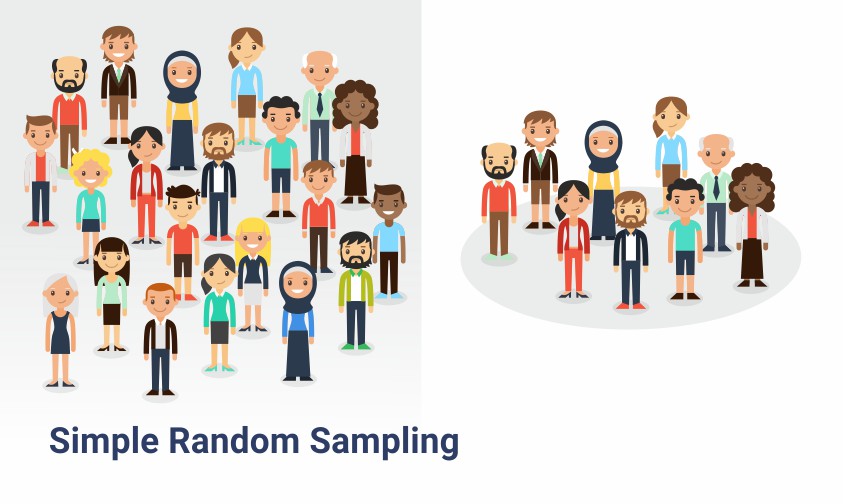
Probability sampling methods
Systematic random sampling:
- A method of sampling in which sample elements are selected from a list or from sequential files, with every nth element being selected after the first element is selected randomly.
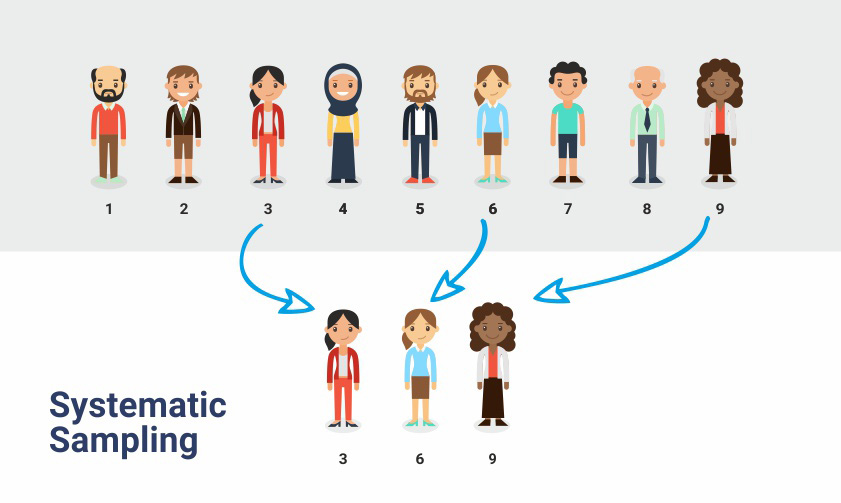
Probability sampling methods
Cluster sampling
- Sampling in which elements are selected in two or more stages, with the first stage being the random selection of naturally occurring clusters and the last stage being the random selection of elements within clusters.
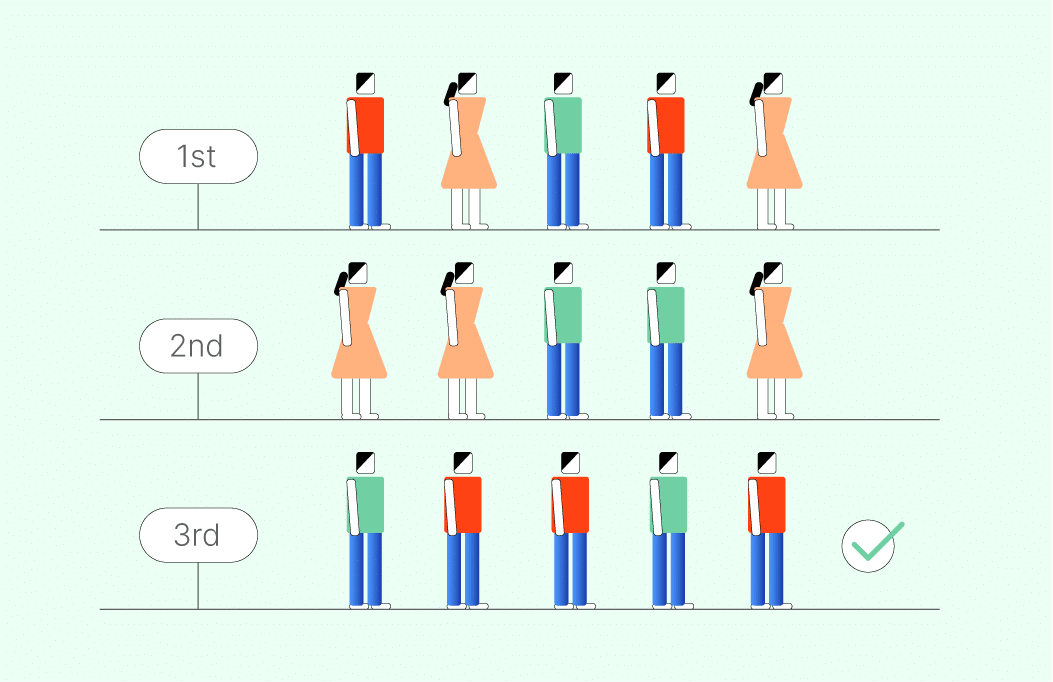
Probability sampling methods
Stratified random sampling
- A method of sampling in which sample elements are selected separately from population strata that the researcher identifies in advance
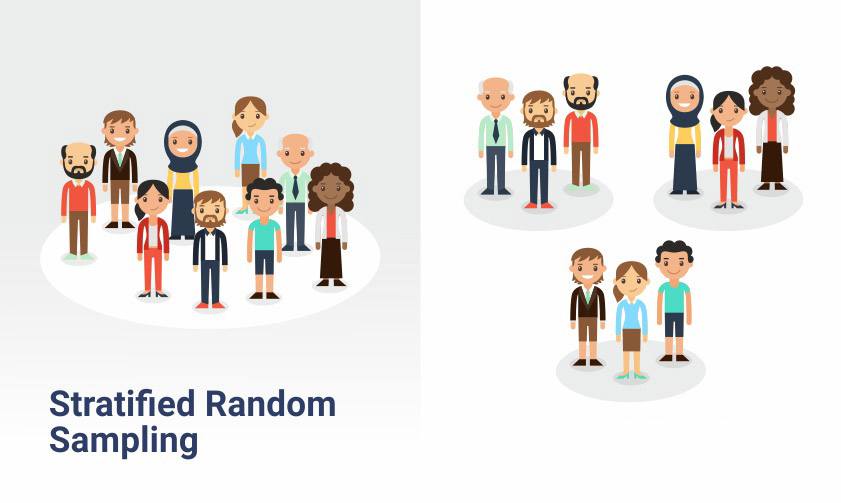
Nonprobability sampling methods:
Availability sampling,
Quota sampling,
Purposive sampling, and
Snowball sampling.
Nonprobability sampling methods
Convenience/Availability sampling
- Sampling in which elements are selected on the basis of convenience.
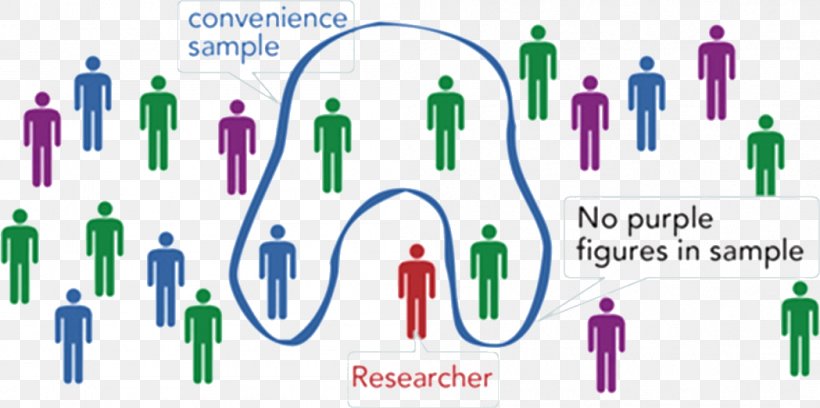
Nonprobability sampling methods
Quota sampling
- A nonprobability sampling method in which elements are selected to ensure that the sample represents certain characteristics in proportion to their prevalence in the population.

Nonprobability sampling methods
Purposive sampling
- A nonprobability sampling method in which elements are selected for a purpose, usually because of their unique position.
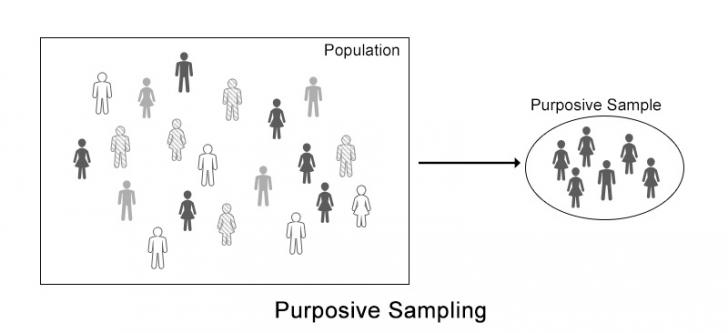
Nonprobability sampling methods
Snowball sampling
- A method of sampling in which sample elements are selected as successive informants or interviewees identify them.
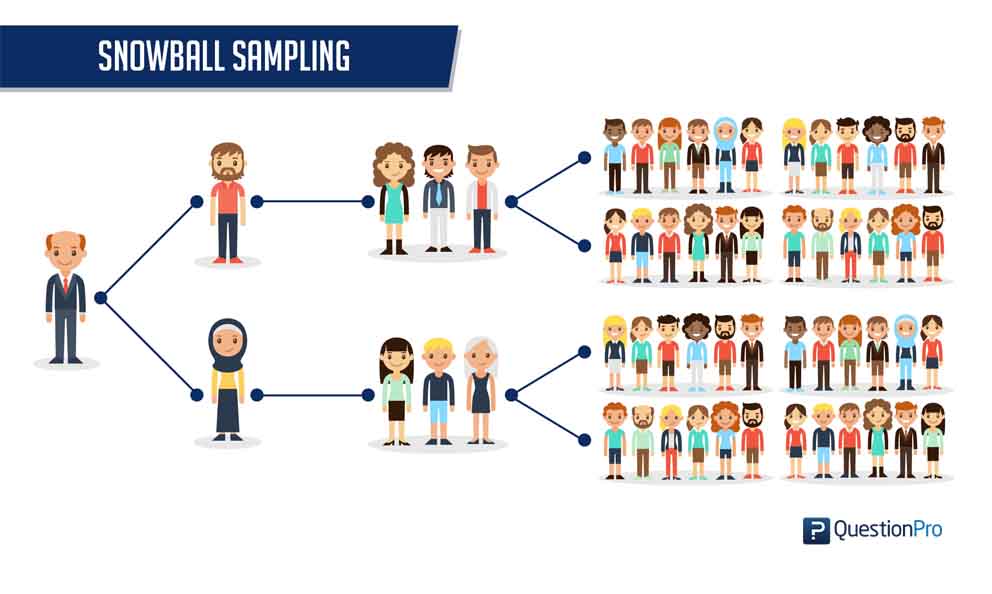
Quantitative Methods & Analysis
Session 5
Survey research
It collects information from a sample of individuals through their responses to standardized questions.
Survey research
It collects information from a sample of individuals through their responses to standardized questions.
Survey Designs
Mailed surveys
Phone surveys
In-person surveys, and
Electronic (especially web) surveys
Statistic:
- A numerical description of some feature of a variable or variables in a sample from a larger population.
Statistic:
- A numerical description of some feature of a variable or variables in a sample from a larger population.
Descriptive statistics:
- Statistics used to describe the distribution of and relationship among variables.
Statistic:
- A numerical description of some feature of a variable or variables in a sample from a larger population.
Descriptive statistics:
- Statistics used to describe the distribution of and relationship among variables.
Inferential statistics:
- Statistics used to estimate how likely it is that a statistical result based on data from a random sample is representative of the population from which the sample is assumed to have been selected
Data cleaning:
- The process of checking data for errors after the data have been entered in a computer file.
Data cleaning:
The process of checking data for errors after the data have been entered in a computer file.
Missing values
Data cleaning:
The process of checking data for errors after the data have been entered in a computer file.
Missing values
Outlier: An exceptionally high or low value in a distribution.
Descriptive Statistics
- Central tendency; mean, median and mode values
Descriptive Statistics
Central tendency; mean, median and mode values
Variability; standard deviation
Descriptive Statistics
Central tendency; mean, median and mode values
Variability; standard deviation
Skewness
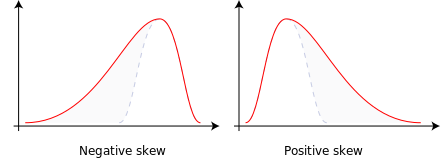
Data Visualisation
- Bar chart: A graphic for qualitative variables in which the variable’s distribution is displayed with solid bars separated by spaces.
Data Visualisation
Bar chart: A graphic for qualitative variables in which the variable’s distribution is displayed with solid bars separated by spaces.
Histogram: A graphic for quantitative variables in which the variable’s distribution is displayed with adjacent bars.
Association/Correlation:
- A criterion for establishing a causal relationship between two variables: Variation in one variable is empirically related to variation in another variable.
Association/Correlation:
- A criterion for establishing a causal relationship between two variables: Variation in one variable is empirically related to variation in another variable.
Causal effect
The finding that change in one variable leads to change in another variable
Qualitative Methods & Analysis
Session 6
Qualitative methods:
- Methods, such as participant observation, intensive interviewing, and focus groups, that are designed to capture social life as participants experience it rather than in categories the researcher predetermines.
Qualitative methods:
Methods, such as participant observation, intensive interviewing, and focus groups, that are designed to capture social life as participants experience it rather than in categories the researcher predetermines.
These methods typically involve exploratory research questions, inductive reasoning, an orientation to social context, and a focus on human subjectivity and the meanings participants attach to events and to their lives.
Ethnography:
- The study and systematic recording of human cultures.

Participant observation:
- A qualitative method for gathering data that involves developing a sustained relationship with people while they go about their normal activities.
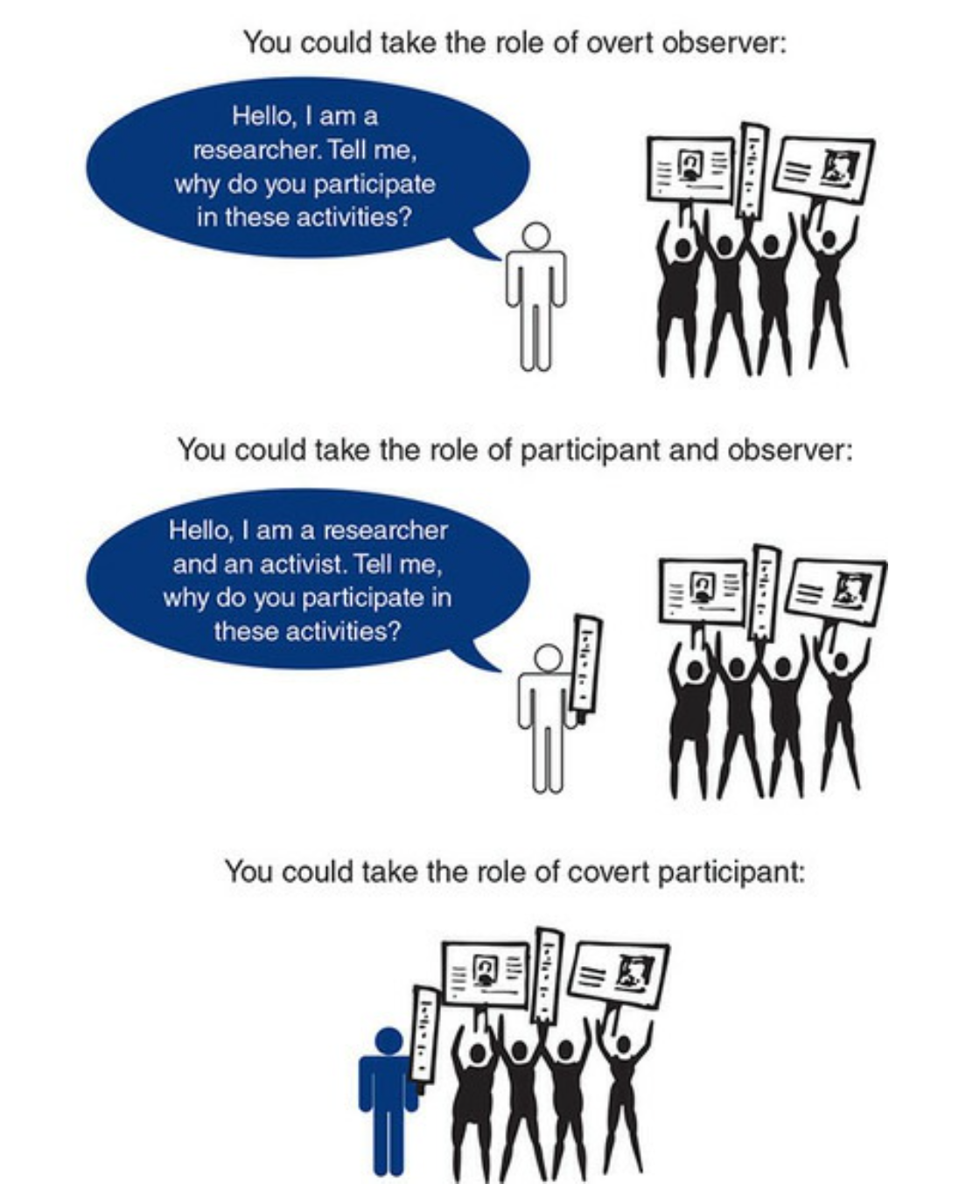
Intensive (depth) interviewing:
- A qualitative method that involves open-ended, relatively unstructured questioning in which the interviewer seeks in-depth information on the interviewee’s feelings, experiences, and perceptions.
Intensive (depth) interviewing:
- A qualitative method that involves open-ended, relatively unstructured questioning in which the interviewer seeks in-depth information on the interviewee’s feelings, experiences, and perceptions.
Focus groups:
- A qualitative method that involves unstructured group interviews in which the focus group leader actively encourages discussion among participants on the topics of interest.
Qualitative data analysis:
- Techniques used to search and code textual, aural, and pictorial data and to explore relationships among the resulting categories.
Most approaches to qualitative data analysis take five steps:
- Documentation of the data and data collection
Most approaches to qualitative data analysis take five steps:
Documentation of the data and data collection
Conceptualization and coding
Most approaches to qualitative data analysis take five steps:
Documentation of the data and data collection
Conceptualization and coding
Examining relationships to show how one concept may influence another
Most approaches to qualitative data analysis take five steps:
Documentation of the data and data collection
Conceptualization and coding
Examining relationships to show how one concept may influence another
Authenticating conclusions by evaluating alternative explanations, disconfirming evidence, and searching for negative cases
Most approaches to qualitative data analysis take five steps:
Documentation of the data and data collection
Conceptualization and coding
Examining relationships to show how one concept may influence another
Authenticating conclusions by evaluating alternative explanations, disconfirming evidence, and searching for negative cases
Reflexivity
Computer-assisted qualitative data analysis:
- Analysis of textual, aural, or pictorial data using a special computer program that facilitates searching and coding text.

References
Babbie, E. R. (2020). The practice of social research. Cengage learning.
Chambliss, D. F., & Schutt, R. K. (2018). Making sense of the social world: Methods of investigation. Sage Publications.
Creswell, J. W., & Creswell, J. D. (2017). Research design: Qualitative, quantitative, and mixed methods approaches. Sage publications.
Sekaran, U., & Bougie, R. (2019). Research methods for business: A skill building approach. John Wiley & Sons.
Most of the images are from website Unsplash and few from internet.